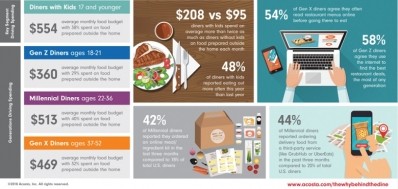Soup-To-Nuts Podcast: Consumers’ continuing love-affair with protein is evolving with new sources
According to Acostas’s 2018 Progressing Protein Palates report, nearly three-quarters of consumers said protein was by far the most influential nutrition fact they consider when making grocery store purchases – a figure that likely will continue to rise, predicted Colin Stewart, the senior vice president of insights at Acosta.
He also suggested that the types of protein that shoppers are buying is becoming more diverse, with most consumers no longer limiting themselves to only protein from animals or from plants – but rather selecting different options based on what they need at any given point in time.
In this episode of FoodNavigator-USA’s Soup-to-Nuts podcast, Stewart, along with Kim Adams who worked with him on the report from Acosta, explain what is behind Americans’ obsession with protein, when and why they reach for protein from animals versus plants and their growing confusion about label claims on different protein sources. Manufacturers of protein-centered products also weigh in on what they are seeing and how they are trying to meet consumers’ changing demands.
What is behind Americans’ love of protein?
Looking first at protein in general, Stewart and Adams explain why Americans are attracted to the macronutrient.
Adams explains most consumers seek protein for its nutritional value, but there is a generational difference. Younger consumers seek protein to feel full and speed recovery after exercise, while older generations are more focused on overall health.
Stewart added that part of the focus on protein stems from consumers cutting back on carbs, but just as they have become more sophisticated in which carbs they are steering clear of, they are becoming more open minded about the sources of the protein they select.
In particular, Acosta found 63% of millennials identify as flexitarians, meaning they eat both plant-based and animal proteins. At 40%, a substantial portion of Generation X also identified as flexitarians, as did 24% of boomers and 22% of seniors.
Animal protein is ‘king’
While consumers are more open to their source of protein, Stewart says, animal meat remains “king” for most shoppers, with 18% of consumers saying they are buying more fresh meat now than a year ago. This figure is even higher at 41% when Millennials are looked at in isolation, which is more than any other generation.
Within animal protein, consumers increasingly are gravitating to natural and organic offerings, Adams said, explaining “this trend goes along with the far reaching trend that we see of consumers trying to eat healthier by avoiding chemicals and preservatives.”
A trio of new frozen grass-fed beef and free-range chicken patties from Tribali are tapping into this demand for less-processed animal proteins.
The company’s founder Angela Bicos Mavridis also explains that patties, which are blended with spices and vegetable purees, are sourced from animals that are humanely raised and according to sustainable environmental practices – all of which make the products more approachable by addressing head-on the main reasons that animal protein has been “vilified.”
Beef and chicken, as illustrated by Tribali’s launch, are the dominating sources of animal protein – accounting for 70% of what Americans eat, according to Acosta. Part of this is due to their broad availability, but Adams says part of the appeal of chicken in particular is its versatility and perceived health benefits.
Plant-based protein is growing 11% annually
At the same time that consumption of animal protein is up, so too is plant-based protein by 11% year-over-year, and it isn’t just by vegetarians and vegans.
“Surprisingly, a lot of crossover exists with 71% of plant-based meat alternative purchasers also eating meat,” which aligns with consumer adoption of flexitarian diets, Adams said.
Consumer confusion about label claims climbs
As manufacturers respond to these concerns with an ever widening-array of choices that make various claims about how the product is made, the ingredients are raised and the overall impact on the earth, consumers are becoming increasingly confused.
“From our study, many shoppers – especially millennials – claimed to have some level of confusion with the vast array of all the different product labels, especially in the meat arena. But they still understand that certain labels are indeed healthier or may be more humane or environmentally-friendly,” Adams said.
Retailers can help clear up confusion by educating staff to walk consumers through different label claims. They can also make easy-to-understand cards explaining what labels mean readily available, Stewart suggested.
One way manufacturers can help clear up confusion is by sharing stories about how their products are sourced and made as a way to illustrate what their certifications mean in the real world.
For example, Serenity Heegel, who co-founded the meat-based baby food company Serenity Kids says her company wants to use its farmers to explain its certifications, including its upcoming partnership with the Savory Institute and the Land-to-Market regenerative agriculture certification.
As manufacturers and retailers strive to explain how different proteins are produced and their values, Adams and Stewart caution not to get too caught up in the minutia and to remember that ultimately, consumers by protein for its nutrition – and that should be the main advertising message.



















